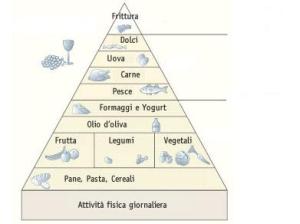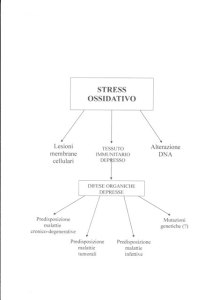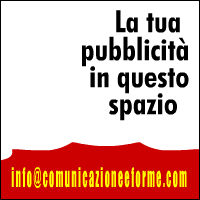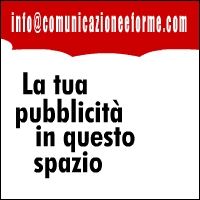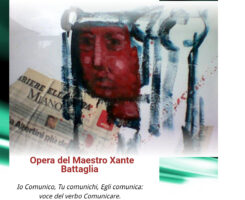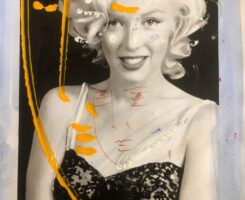OXIDATIVE STRESS – Italo Richichi
STRESS OSSIDATIVO ALL’ORIGINE DI MOLTE MALATTIE
THE MECHANISM THAT RULE the relationship between RADICALS AND ANTIOXIDANTS
Autore Italo Richichi
Prof. Italo Richichi, Cardiologo, President Italian Federation Clubs Calabresi
PREMISE
THE CONCEPT AND STRESS' CONTRACTED THE FORM OF THE WORD "DISTRESS", WHAT DOES IT MEAN: SENSAZIONE D'ANGOSCIA. VENIVA USATA PER LA PRIMA VOLTA NEL XV° CENTURY. SINCE THEN THE MEANING AND' It WAS EXPLAINED IN ITS CHEMICAL PHYSIOLOGICAL MECHANISM, THAT SO' CAN' BE EXPLAINED: STRESS HAS A NECESSARY COMPONENT BEHAVIORAL ADAPTATION OF EXTERNAL AGENTS (BUT ALSO ENDOGENOUS), CONSTANTLY CHANGING TO KEEP INTEGRA LIFE TO RESIST OR EMERGENCY SITUATIONS; OVERVIEW AND' A PROCESS neuroendocrine THAT FITS THE MAN IN THE WORLD. MAN OF THE CAVES WAS EXTREMELY SUMMARY: FIGHT OR FLIGHT. THE TIME HAS CHANGED THE HUMAN BODY AND EVEN HIS REACTIONS HAVE ADAPTED. MANY RESEARCHERS HAVE STUDIED AND DESCRIBED THE PHENOMENON AND ITS CHANGES.
The CARDIOLOGIST. RICHICHI IN 1991 He described the CARDIOVASCULAR MECHANISM OF STRESS IN ITS VOLUME "STRESS AND MYOCARDIAL”; RENEW NOW TOPIC adapting it to
MECHANISM OF LONGEVITY' COL TEXT ON THE MEDITERRANEAN DIET
_______________________________
The living beings represent a complex chemical-physical machine; the many functions are regulated by precise and definite laws. The appeal of all biochemical reactions, per esempio, lets imagine a higher adjustment, able to avoid arrest when the first error; the metabolic field shows an example of a function that is close to perfection. Breathing is a simple and perfect mechanism that allows life; with each breath penetrate into our lungs from 150 a 200 Air DC; from these the lung separates, filters and absorbs only oxygen (The2) that is placed in the apparatus to maintain the circulatory life to the cells of all tissues; It recovers carbon dioxide from the blood that is, always from the lung, returned in the air; and how many toxic substances, polluted are in some fresh air! Biochemical lung power and blood are getting the filter and cleaning to prevent alteration and apparatus lung disease; in these chemical processes they are formed and change the moment produced by moment; between "transitory bodies” Denham Harman del''Università Nebraska spotted these highly reactive and toxic products, then called, free radicals; the accumulation of these molecules produce growing lesions in tissue cells and makes them age quickly; very damaged cells are left to die spontaneously (apoptosis) because they understand that they can not exceed the damage. The free radicals, excess in the body, reduce immune defenses, making the most fragile person in front of serious diseases (chronic degenerative diseases, tumor, infectious); the negative effect is called "oxidation"; to neutralize the harmful effect must buffer the oxidation through the sale of oxygen; antioxidants immediately enter into action yielding oxygen and restoring the balance of free radicals.
Endogenous antioxidants can not compensate for all the radicals that are then formed remains a massive surplus that always affects the instability causing STRESS OXIDATIVE; only the introduction of exogenous antioxidant allows to avoid wear damage that occur in time.
To avoid the OXIDATIVE STRESS from the outside is necessary to introduce a sufficient amount of antioxidants; the power supply is the easiest and simplest way of introduction; it is therefore important to treat all food for this vital but neglected feature. The US Department of Agriculture has developed the ORAC scale (oxigen radical absorbance capacity) as a guide to a proper type of nutrition that can protect the human body dall'insidia of free radicals. The administration of 5.000 ORAC units per day is guaranteed to avoid the maintenance Oxidative Stress.
Is a list of the main antioxidants:
- POLYPHENOLS (flavonoids, resveratrol, quercitina, Curcumin and other): carrots, peperoni, soft fruits, black grapes, green tea, onion, curcuma.
- Vitamin A: carrots, apricots melons, peperoni.
- Vitamin C: citrus, kiwi, spinach, Brussels sprouts, Green leafy vegetables.
- Vitamin E: dried fruit, olive oil, almonds, oilseeds.
- lipoic acid: potatoes, broccoli,spinach, red meat.
- coenzyme Q10: cereals, soy, fish, meat.
- melatonin: rice, avena, more.
- Selenium: seafood, cereals.
- Copper: seafood, lentils, nights.
- Zinc: spinach, soy, bran.
Foods rich in antioxidants according to the ORAC scale:
-
black plums 3 = 1450 unit
-
black grapes ( 1 grappolino) = 569
-
Pepper 1 = 530
-
beans cooked (1 cup) = 400
-
Onion 1 = 360
-
Aubergine 1 = 32
-
Tomato 1 = 116
-
Cucumber 1 = 36
Pyramid reference Food (Calabria)
-
La Dieta Mediterranea contiene tutti gli elementi necessari per rappresentare un'alimentazione corretta ed equilibrata; the basic advice remains the need to constantly change the type of food in order to introduce all the necessary components respecting the correct ratios with 60-65% carbohydrates, il 15-20% of lipids and the 12-15% of protein. Free radicals are found mainly in meat and fat (proteins and lipids), especially saturated fats are rich; Antioxidants are abundant in grains, legumes, frutta, vegetables, vegetables; l'olio di oliva è un grasso particolare perchè è costituito principalmente dall'acido oleico che è un forte antiossidante.
-
SCHEME OXIDATIVE STRESS.
-
THE 10 RULES FOR BALANCED FEED
1. Weight maintenance.
2. Avoiding overweight eliminating immediately the 2-3 pounds.
3. Limit carbohydrates to about 60-65% of daily calories; of which the 50% of complex carbohydrates (starches) and natural sugars (or simple) derived from milk, frutta, vegetable and 10-15% refined sugars derived from table sugar and that this jelly, jams and syrups.
4. Limit your fat intake (or lipids) to the 20-25% of daily calories; privileging of vegetable fats.
5. Fat consumption should be commensurate with 15% monounsaturated fat, 6% of polyunsaturated fats and 4% saturated fat.
6. Limit your intake of protein 12-15% of total calories; giving priority to plant proteins (cereals, legumes) compared to those of animal origin.
7. Keep alcohol consumption to 50 grams per day equal to ½ liter, not to exceed the 5-6% of total calories.
8. Keep your salt intake (sodium chloride) within 5-6 grams per day.
9. Limitare l'introduzione di colesterolo a circa 300 mg per day to stay within the 200 mg per deciliter of blood
10. Drink 1-1.5 liters of natural water per day.
_____________________________


